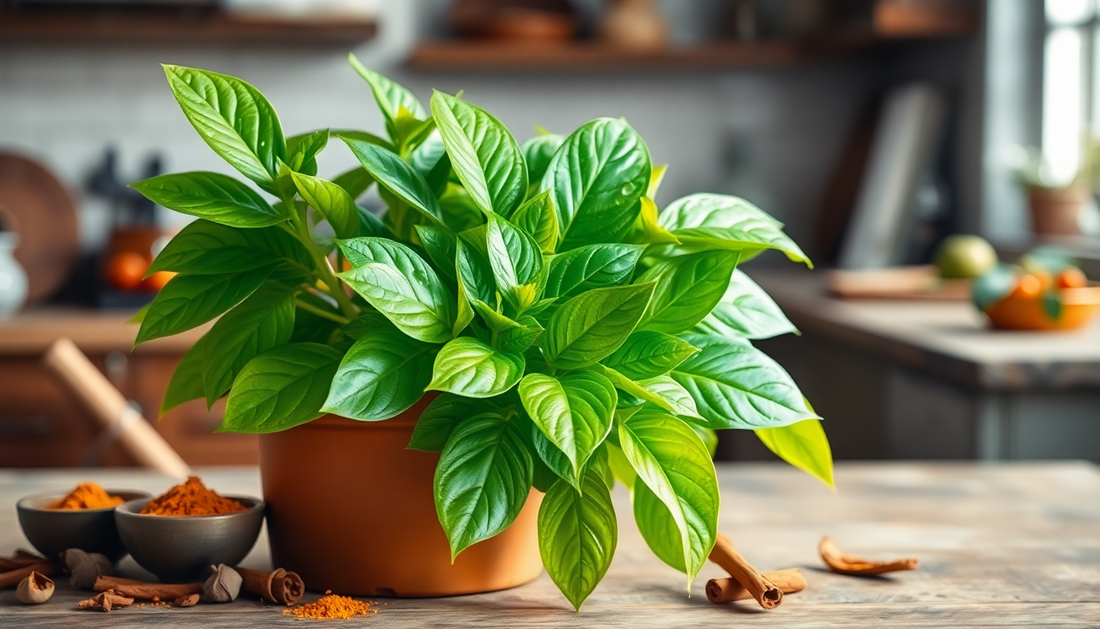
Unlock the Heart-Healthy Secrets of Curry Leaves
In the bustling city of Bangalore, a unique online shop called Idyl has been making waves in the gardening community. Idyl is a one-stop-shop for all your gardening needs, offering a wide range of plants, fertilizers, and even gardening services. But today, we're going to explore a hidden gem that Idyl has to offer: the mighty curry leaf.
Curry leaves, often overlooked as a mere seasoning, are actually a powerhouse of health benefits, particularly when it comes to heart health. As we delve into the science behind this unassuming herb, you'll be amazed at the ways it can support your cardiovascular well-being.
The Nutritional Profile of Curry Leaves
Curry leaves are packed with an impressive array of vitamins, minerals, and antioxidants. They are a rich source of vitamins A, C, and E, as well as essential minerals like calcium, iron, and magnesium. But the real standout is their high content of polyphenols, a class of plant-based compounds with potent anti-inflammatory and antioxidant properties.
These polyphenols, including quercetin, kaempferol, and rutin, work tirelessly to neutralize harmful free radicals, reducing oxidative stress and inflammation throughout the body. This is particularly crucial for heart health, as chronic inflammation and oxidative stress are major contributors to the development of cardiovascular diseases.
Curry Leaves and Cholesterol Management
One of the most well-documented benefits of curry leaves is their ability to regulate cholesterol levels. Studies have shown that the active compounds in curry leaves, such as mahanimbine and girinimbine, can effectively lower LDL (bad) cholesterol and triglycerides, while simultaneously increasing HDL (good) cholesterol.
This cholesterol-balancing effect is attributed to the way curry leaves influence the body's lipid metabolism. They can inhibit the absorption of cholesterol from the diet and promote the excretion of cholesterol through the bile. Additionally, curry leaves have been found to upregulate the expression of genes involved in cholesterol clearance, further contributing to their cholesterol-lowering properties.
Curry Leaves and Blood Pressure Management
Maintaining healthy blood pressure is another crucial aspect of heart health, and curry leaves can play a role in this as well. The antioxidant and anti-inflammatory compounds in curry leaves have been shown to help relax and dilate blood vessels, improving blood flow and reducing the strain on the cardiovascular system.
Furthermore, curry leaves contain compounds like carbazole alkaloids and flavonoids that can inhibit the activity of angiotensin-converting enzyme (ACE), an enzyme that regulates blood pressure. By blocking ACE, curry leaves can help lower blood pressure and support overall cardiovascular function.
Curry Leaves and Diabetes Management
Diabetes is a significant risk factor for heart disease, and curry leaves may offer some protection in this regard as well. Studies have demonstrated that the active compounds in curry leaves can help regulate blood sugar levels by improving insulin sensitivity and reducing the absorption of glucose from the gut.
Additionally, the antioxidant properties of curry leaves can help mitigate the oxidative stress and inflammation associated with diabetes, which are known contributors to cardiovascular complications. By managing blood sugar levels and reducing the damaging effects of diabetes, curry leaves can play a role in supporting heart health for those with this chronic condition.
Incorporating Curry Leaves into Your Diet
Now that you understand the impressive heart-health benefits of curry leaves, the next step is to incorporate them into your daily routine. Idyl, the online gardening shop in Bangalore, offers a wide selection of fresh curry leaves that you can easily order and have delivered to your doorstep.
You can use curry leaves in a variety of ways, from adding them to your favorite curries and stir-fries to brewing them into a soothing tea. Experiment with different recipes and find the ways that work best for you. Remember, consistency is key when it comes to reaping the full benefits of this remarkable herb.
In conclusion, the humble curry leaf is a true superstar when it comes to supporting heart health. With its impressive nutritional profile, cholesterol-regulating abilities, blood pressure-lowering effects, and diabetes-management properties, it's no wonder that this herb has been revered in traditional Indian medicine for centuries. By incorporating curry leaves into your daily life, you can take a proactive step towards a healthier, stronger heart. So, head over to Idyl and stock up on this versatile and beneficial plant today!
References
- Arulselvan, P., & Subramanian, S. P. (2007). Beneficial effects of Murraya koenigii leaves on antioxidant defense system and ultra-structural changes of pancreatic β-cells in experimental diabetes in rats. Chemico-biological interactions, 165(2), 155-164.
- Dineshkumar, B., Analava, M., & Manjunatha, M. (2010). A comparative study of alpha-amylase inhibitory activities of common antidiabetic plants at Dharwad, Karnataka, India. International Journal of Diabetes and Metabolism, 18(1), 20-25.
- Ghasemzadeh, A., Ghasemzadeh, N. (2011). Flavonoids and phenolic acids: Role and biochemical activity in plants and human. Journal of Medicinal Plants Research, 5(31), 6697-6703.
- Iyer, D., & Uma, D. P. (2008). Antihyperlipidemic effect of Murraya koenigii (curry leaf) extract. Indian journal of pharmaceutical sciences, 70(6), 818.
- Khattak, S., & Rehman, S. (2016). Biosynthesis, classification, medicinal uses and safety profile of flavonoids: A review. Tropical Journal of Pharmaceutical Research, 15(5), 1104-1110.
- Muthu, A. R., Sethupathy, S., & Manavalan, R. (2005). Antihyperlipidemic effect of Curry leaves (Murraya koenigii) on high fat diet fed-streptozotocin diabetic rats. Indian journal of experimental biology, 43(10), 856-860.
- Ramsewak, R. S., Nair, M. G., Strasburg, G. M., DeWitt, D. L., & Nitiss, J. L. (1999). Biologically active carbazole alkaloids from Murraya koenigii. Journal of agricultural and food chemistry, 47(2), 444-447.







No comments